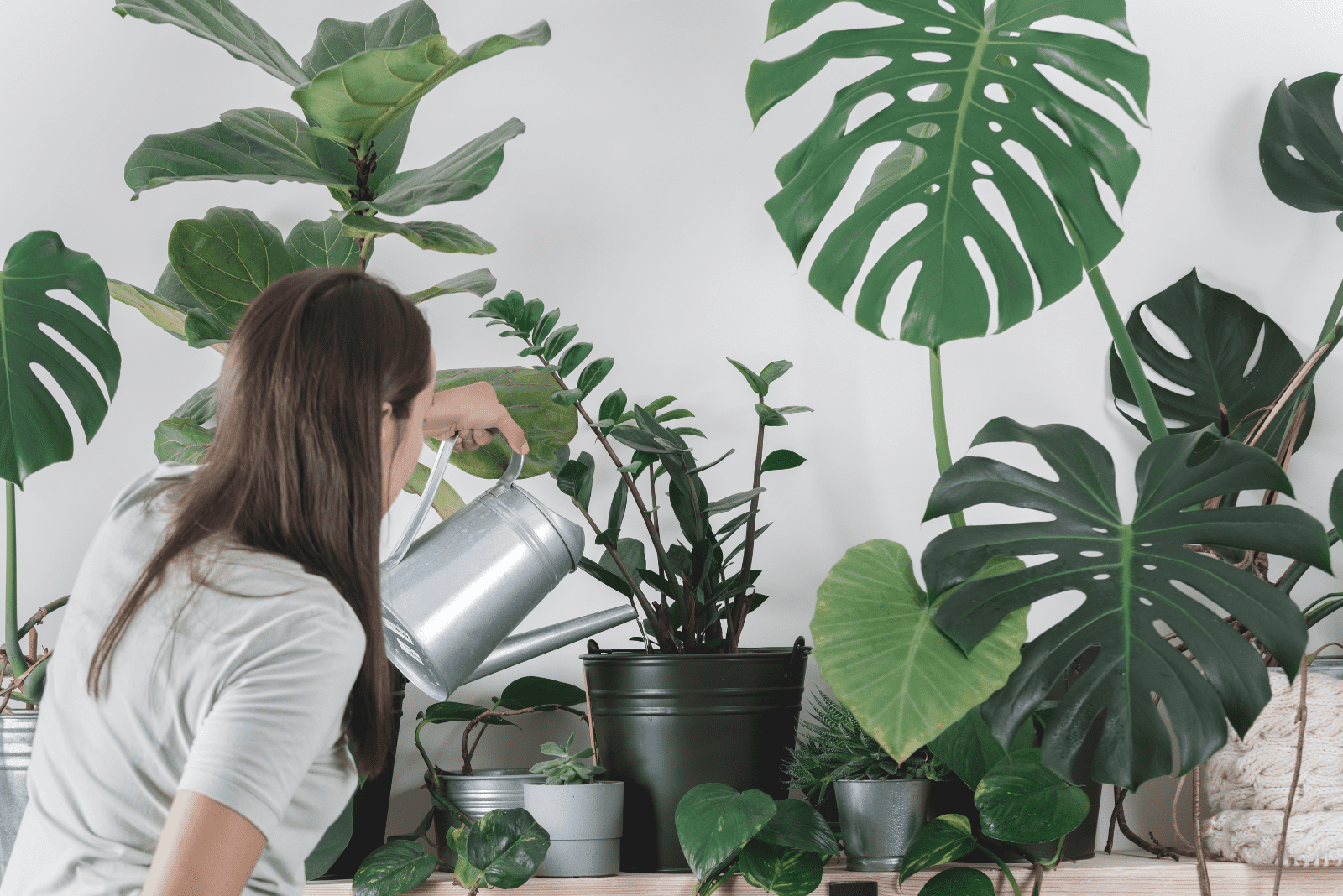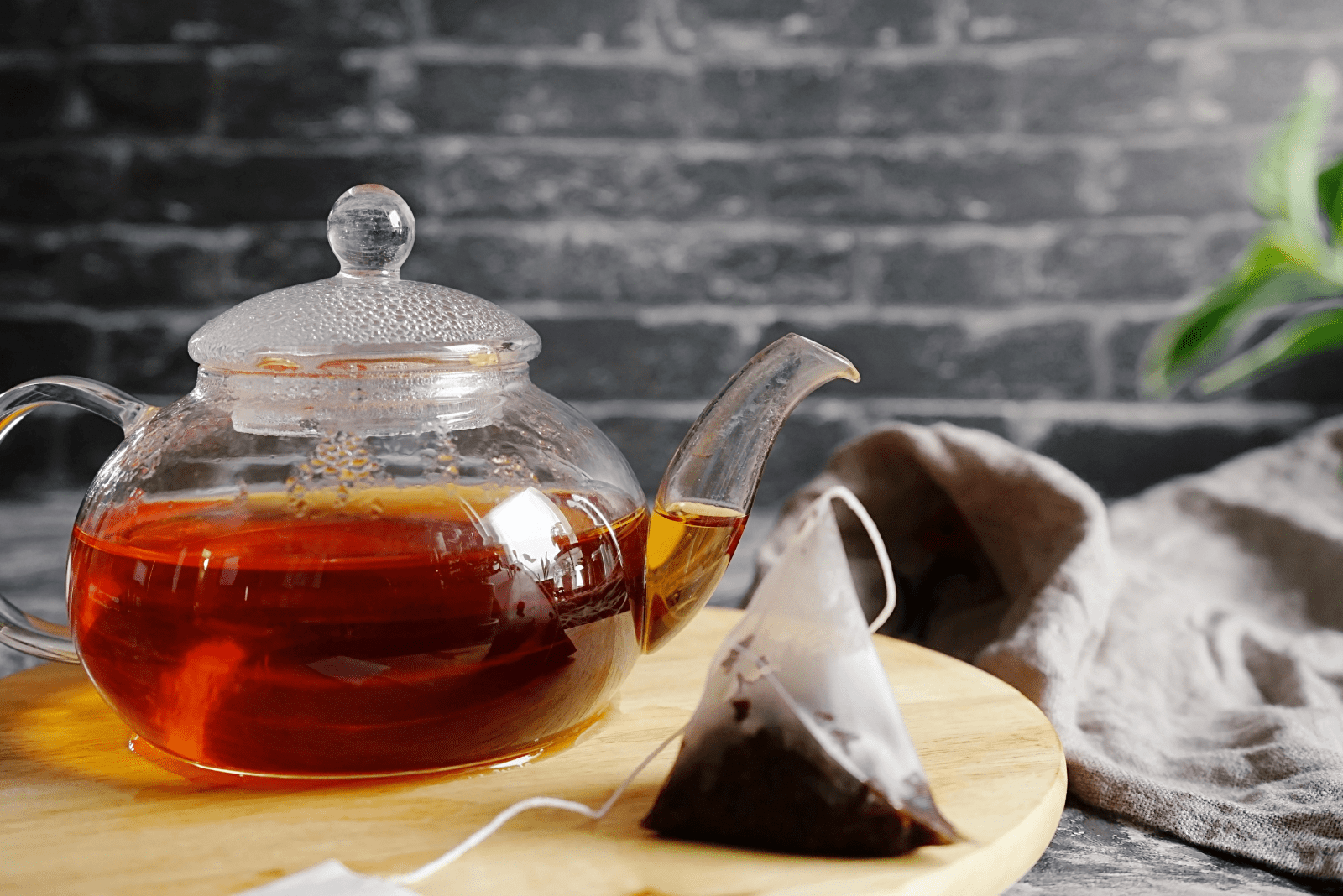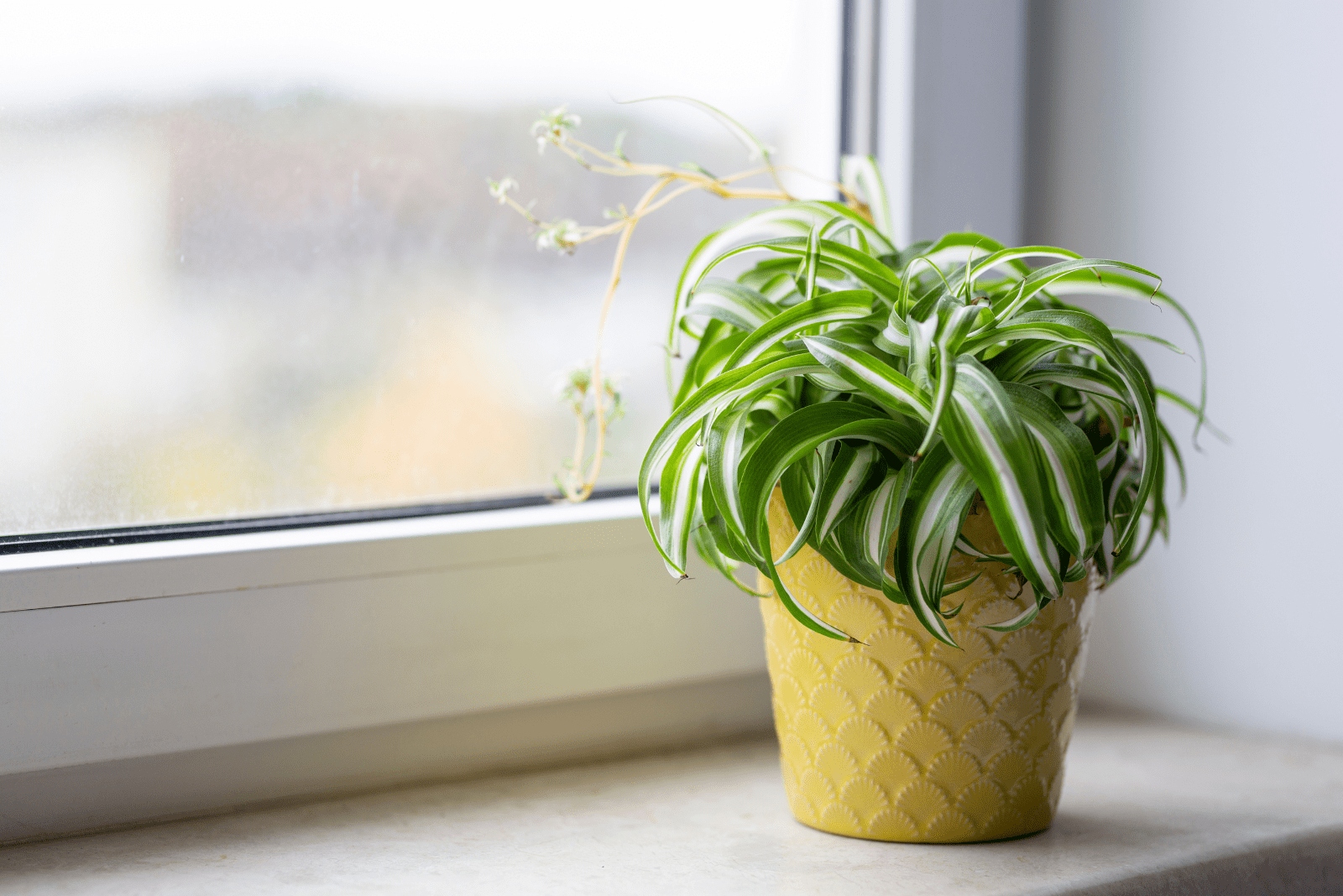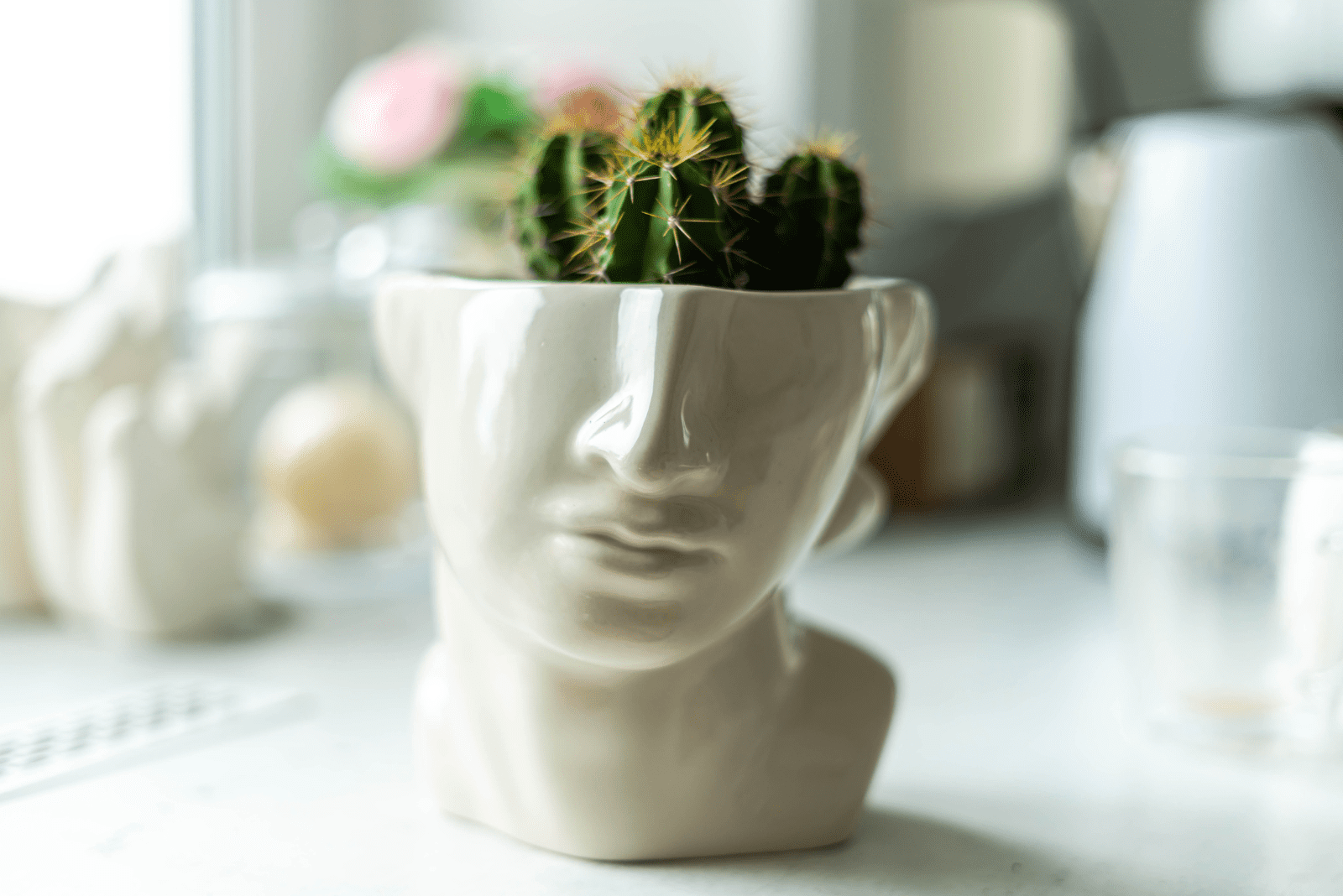Does having a tea party with your plants sound fun?
Well, if you were wondering if you can actually give your plant some tea to drink, we are here to help you. I mean, you can give them coffee grounds, so what could go wrong if you give them some tea?
There are a lot of different gardening hacks that can be quite useful, so the idea of giving your plants some tea does not come as a surprise, especially because drinking tea can be quite beneficial to our health as it is filled with vitamins, minerals, and antioxidants.
But is it the same for plants as well?
Before you start boiling the water, keep on reading to see if watering plants with tea is approved by gardeners… psst, you might need the water after all!
Watering Plants With Tea: Should You Do It?
Tea has been used for centuries—it was primarily used because of its healing and calming features. It can be hard to tell what substances can be found in tea because usually, just one tea bag consists of plenty ofl different herbs—combined to create a perfect mixture.
However, if we look at the bigger picture, we can say that nitrogen, potassium, and phosphorus can be found in tea while tea leaves consist mostly of tannic acid.
You are probably familiar with the famous NPK formula when fertilizing… Did you know that NPK stands for nitrogen (N), phosphorus (P), and potassium (K)?
In some way, tea nourishes your plant just like fertilizers do, and you could refer to tea as a plant fertilizer!
But yes, tea can help your plants with hydration, growth, nourishment, and fertilization as well. Nitrogen will encourage leaf production, especially if you bury tea bags in the soil (that is one way to use tea for plants).
However, you can always use leftover tea to water your plants or make freshly brewed tea for your plants—just make sure that it is not hot!
Also, keep in mind that the tea leaves contain acid, so applying them will affect your soil’s pH—it will become more acidic. Some plants that don’t like mushroom compost probably won’t like drinking tea either, because these ones prefer growing in more alkaline environments.
Are There Any Cons?
When you consider the benefits of watering your plants with tea, the drawbacks that come with it are really not that serious.
For instance, overwatering can potentially be an issue if you keep watering your plants with regular water and also tea at the same time.
There can also be an aluminum build-up in the soil, but this is if you excessively use tea—for example, a couple of times a day.
Your plants can also grow slower than usual, but this is also only if you use too much tea.
How To Use Tea For Plants
There are a few ways that you can use tea to benefit your plants. The most obvious method is to simply water your plants, but you can also use tea bags, tea grounds, and tea leaves.
You can either use freshly brewed tea or you can use cold tea that you have forgotten to drink.
Watering your plants with tea is a simple and low-cost method that can be useful for most indoor plants, and you can also use this as an excuse to make yourself a nice cup of tea!
Watering Plants With Tea
When watering plants with tea, you have to take into consideration a few things—for instance, if it happens that you have cold tea laying around somewhere in the kitchen, don’t use it if you have already watered the plants that day.
This can easily lead to overwatering, which can have severe consequences, such as root rot (this disease completely destroyed my Monstera plant).
However, this can be avoided if you simply don’t water your plants the same day that you have planned to water them with tea.
What’s also important is that you don’t pour hot tea all over your plants—extremely hot temperatures will shock your plants and cause permanent damage!
You can follow these simple instructions:
1. First, you should brew a tea using 1 or 2 tea bags (organic ones are better)
2. Then, you should let the tea sit for a few hours, or overnight, to cool down
3. Once the tea is cold enough, you should pour the tea equally over the plants
I recommend that you use tea instead of regular water every now and then, but don’t overdo it because your plant still needs water.
If you are a tea drinker, then you are probably familiar with the fact that there are a lot of different types of tea. The question is, do different types of tea affect plants in the same way, or is one type of tea better than another?
Let’s look at the common types of tea that you can use for watering your plants.
Watering Plants With Black Tea
Black tea contains a lot of micronutrients that can be useful for your plants. It also contains tannic acid, so it will affect the pH levels in the soil. Teas that contain tannic acid should not be used in plants that don’t like acidic soil (you can check the list of these plants below).
However, you can use this tea on numerous houseplants, tropical plants, garden plants, and vegetables.
Black tea is mostly made of the dried leaves of a plant known as Camellia Sinensis—this plant is also found in lots of different teas, which is why it got the name “tea plant”. You can try to cultivate it and make the tea from your own plants!
Watering Plants With Green Tea
If you are trying to find a coffee alternative or trying to lose some weight, then you have probably heard of green tea. Though it has a kind of earthy taste, there are a lot of health benefits that come from it!
It is quite beneficial for the plants as well—it contributes to the organic matter and can be used as a plant fertilizer.
If you are growing blueberries, roses, decorative shrubs, and tomatoes, then I suggest that you apply raw green tea leaves.
Watering Plants With Herbal Tea
Chamomile, willow, comfrey, ginger, peppermint… There are a lot of different options when it comes to herbal tea. Each type works differently with plants, but they all do a very good job!
Herbal tea can hydrate potted plants and encourage plant growth. They also serve as a quick boost of energy to make your plants look more lively.
They also contribute to the nutrients in the plant’s soil, so they can serve as plant fertilizers.
Tea Leaves For Plants
As we have already mentioned, you can also use raw tea leaves for plants. If we compare tea leaves with liquid plant fertilizers, we can see that there is a lot more nitrogen present in the tea leaves.
Here is how you do it:
• Put some tea leaves on the soil near the base of the plant
• You can also add tea leaves to your compost pile and allow them to become organic compost for your soil
• Put them in a leftover pot of tea and then use it again for watering your plants.
Tea Bags For Plants
Burying tea bags in the soil is a great way to improve nutrient content in the soil.
You should use tea bags that are made of paper rather than any other material, such as polyester, because these materials won’t decompose in the soil, and you will end up with a tea bag in the soil that can affect the normal functioning of a plant.
Keep in mind that you should only bury the bags that have already been used before—nothing will happen if you bury a dry tea bag in the soil.
This is a great practice because you will end up recycling your waste, which is kind of necessary in today’s world.
Nonetheless, once you apply tea bugs to any type of plant, you should carefully examine it and see how the plant is going to react. Take into consideration the leaf quality, growth rate, and overall health of your plant.
Tea Grounds For Plants
This is quite similar to the previously described methods, though I think it’s worth mentioning. For instance, you can use dry tea leaves and add them to the soil as well, or you can take tea grounds out of the tea bags and sprinkle them all over the soil.
If you are a herb collector like I am, then you should know that the herbs used to make tea can also be used as tea grounds for plants. I usually chop them into smaller pieces and add them to plants or a compost pile.
Please note that you should add tea grounds to an indirect source, such as organic compost, if you want to use them for vegetables and edible fruits.
When plants are actively growing, mixing tea leaves directly into the soil in your garden could potentially upset the pH balance and even affect how your plants taste.
However, as tea grounds encourage the decomposition of microorganisms, they are typically a beneficial addition to an organic compost pile.
Tea grounds can be applied to garden soil well before planting your winter or summer crops if organic compost won’t be used. The soil balance and the sort of plant you are planning to grow are essentially the only factors that matter.
More About Tea And Plants
Now we have covered the benefits and the methods of watering plants with tea, let’s take a closer look at what else can be found in tea and what types of plants benefit the most from it!
What Can Be Found In Tea?
We mentioned earlier that tea contains nitrogen, phosphorus, and potassium; in addition to these nutrients, there can also be magnesium, calcium, manganese, zinc, and copper—these are all nutrients that make your plant strong and healthy!
If we take a look at a nutrient breakdown of the leaf, we can see that there is about 0.25% of potassium, 4.4% of nitrogen, and 0.24% of phosphorus.
However, there are other components that can be found in tea, including:
• Theanine—this is an amino acid that can be found in the leaves but also in Bay Bolete mushrooms. There are numerous health benefits that come from it, which is why we should drink green tea on a regular basis (this amino acid cannot be found anywhere else).
• Polyphenols—these are the micronutrients most commonly found in plant-based food. One of them includes tannic acid, which can alter the soil’s pH. These micronutrients protect the body’s tissues against oxidative stress and other pathogens, such as cancerous cells, heart diseases, and inflammation.
• Antioxidants—they help with protecting the cells from any type of damage. These include lignans, phenols, flavonoids, and tannins.
• Vitamins and minerals—if we take green and black teas as examples, these are rich in vitamin D, C, and K, as well as in riboflavin. Other mineral elements include zinc, nickel, magnesium, iron, calcium, and fluoride.
Types Of Plants That Benefit From Tea
Most plants benefit from tea, especially the ones that prefer growing in acidic soil. For instance, evergreen ferns will thrive if you keep watering them with tea—but don’t overdo it because most plants like slightly acidic soil!
These are the plants that absolutely adore all nutrients from the tea:
1. Hydrangeas—these are flowering shrubs that are primarily used for decorating. Here is a fun fact: Did you know that the color of the flowers actually depends on the soil’s pH? That’s right, and if you add tea that lowers the pH, you might end up with blue flowers instead of pink!
2. Azaleas—these are also flowering shrubs that are relatively easy to grow. There are a lot of different species that come in different colors, so it’s not hard to find one to suit your style!
3. African Violets—African violets are tiny indoor plants that have fuzzy leaves and clusters of white, blue, or purple flowers. They are generally easy to take care of, which is why you will spot them frequently in homes.
4. Spider Plants—these are unique houseplants that have green leaves that look like swords. They are drought-tolerant, so you can use tea instead of water to bring them back to life.
5. Tomatoes—easy-to-grow tomatoes are a must-have in every garden. Though they will thrive in almost any conditions (as long as there is full sun), they prefer slightly acidic soil.
6. Oxalis—these are flowering plants that are extremely prolific (they are considered to be invasive in some regions). This is the reason why most of the species cannot be cultivated indoors.
7. Rubber plant—this is a tall ficus plant that is relatively easy to grow, though it requires some type of support as it grows.
8. Begonias—flowering plants that do well in various conditions, Begonias have been cultivated for centuries. I absolutely love my Begonia Beefsteak, especially because of its vibrant pink flowers.
9. Philodendrons—these are tropical plants that are usually grown as houseplants. There are over 400 different species, but most of them have similar plant care, which is why you can water your Philo with tea.
10. Poinsettia—Poinsettia has an intriguing appearance due to its mix of red and green foliage. Not all varieties of poinsettia have red leaves; some have white, pale green, orange, or yellow leaves.
11. Orchids—one of the most beautiful houseplants with various different flower shapes and colors, some types of orchids prefer growing in slightly acidic soil. Be mindful of what type of orchid you are growing because some of them might prefer growing in alkaline and neutral environments.
12. Roses—these are also beautiful flowering plants that prefer slightly acidic soil. You can add coffee grounds to the roses as well.
13. Ferns—with their unique-looking green leaves, ferns have become quite popular ornamental plants that prefer growing in soil with lower pH levels.
14. Daffodils—this is one of the most magnificent Greek flowers. 6.0 to 6.5 is the ideal pH range for their soil if you want to grow them well. Daffodil bulbs should be planted in loose, nutrient-rich soil with good drainage.
15. Rhododendron—you should aim to lower the pH to 4.5–6.0 for the rhododendron, because it is an acid-loving outdoor plant. To improve acidity, you can always mulch this plant with pine needles.
Reed also: Meet 20 Acid Loving Houseplants, Garden Plants, And Vegetables
Types Of Plants That Don’t Like Tea
Just like some people prefer drinking coffee instead of tea, there are also plants that just don’t like tea. These are the plants that prefer growing in alkaline environments, which means that the pH levels should be higher.
Some of these plants include:
1. Boston ivy—this is a fast-growing climbing plant that produces deep-green leaves that turn into magnificent red and pink colors as the fall arrives. These plants prefer more neutral to alkaline soil.
2. Cacti plants—though they are used to growing in various conditions, these plants grow best in soil that has pH levels from 5 to 6.5.
3. Magnolia—there are around 340 different species of flowering trees in the magnolia genus. The individuality of each plant and the variety of shapes and colors of the blooms it produces account for their popularity in landscaping and garden decoration. They prefer growing in soil that is between 5.5 and 6.5 pH.
4. Daisies—the flowering plant known as a daisy has a huge, star-shaped head with clusters of florets encircling a central disc of yellow or black florets. These plants prefer growing in soil that has pH levels between 6.0 to 8.0.
5. Carnations—Carnations are a type of dianthus, commonly referred to as pinks, because they naturally come in a variety of pink, white, coral, and red hues. These are usually used as cut flowers (you have probably seen one in a bouquet). If you want to grow your own carnations and create various bouquets, then note that these plants prefer growing in soil that has pH levels above 7.
6. Marigolds—these are beautiful plants that are primarily used in companion planting because they attract lots of beneficial insects. They are a great companion plant of Celosia. These also have a strong fragrance, which is why they are used as deer resistant plants.
7. Poppies—these are herbaceous plants that often produce red flowers. They can be spotted in nature, though some gardeners like to grow poppies in their gardens.
8. Iris—this is a flowering plant that produces purple and blue flowers, though this may vary between different species. Though these plants can grow in slightly acidic soil, they usually prefer growing in pH levels above 7.
Frequently Asked Questions
1. Is tea good for watering plants?
Yes, watering plants with tea is a great option for hydration, nourishment, foliage production, and also fertilization. Since most tea consists of nitrogen, potassium, and phosphorus (the famous NPK), tea can also serve as a plant fertilizer alternative.
You can use leftover tea or make a new pot—just make sure that you don’t pour hot tea all over your plants. You can also use tea bags, tea leaves, and tea grounds as a form of nourishment.
Make sure to combine tea grounds and leaves with compost before applying them to fruits and veggies.
2. What is the best type of tea for watering plants with?
Herbal tea is one of the best types of tea to use when watering plants. It is a mixture of various herbs that contain many beneficial nutrients, minerals, antioxidants, and vitamins.
You can also use green tea and black tea—these contain tannic acid that lowers the pH levels. Green tea also contains theanine, which cannot be found anywhere else (except in some mushrooms).
3. How should tea be applied to plants?
You can simply use leftover tea and pour it—just like you would with water. Other options include burying used tea bags into the soil, putting dried tea leaves on the surface of the soil, and putting tea grounds into organic compost.
Always make sure that the tea is not extremely hot before applying it to the plants, because this could permanently damage them.
Final Word
Watering plants with tea is a great gardening hack, but only if you use it smartly.
There are a lot of benefits that come from tea, not only for plants but for us humans too!
They are usually packed with healthy nutrients, vitamins, minerals, antioxidants, and also acids that can be found nowhere else (I’m talking about theanine, of course).
So, when you get up one morning to make yourself some tea, add a little bit more water so that your plants can enjoy a nice cup of tea as well, just make sure that it cools down first!
I hope this article was helpful. 🙂
Until next time!
Like this post? Share or pin it for later!






